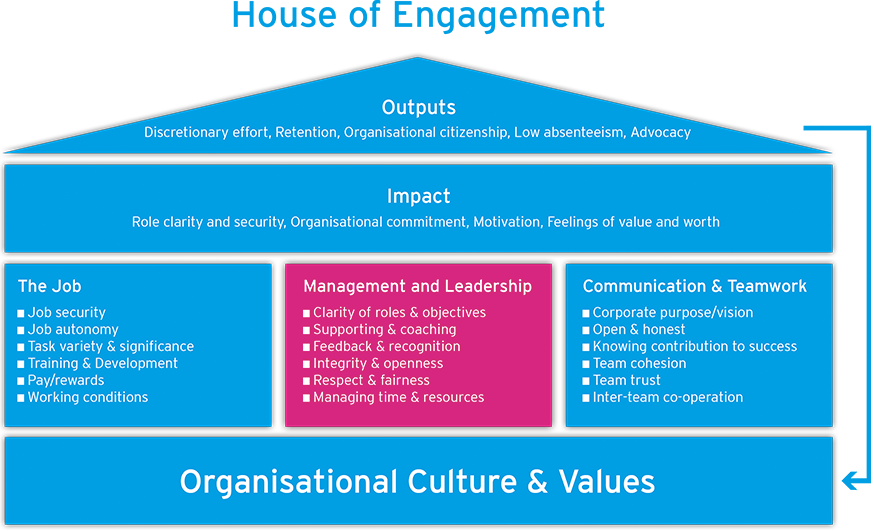It can happen in any industry, to any employee.
A once eager, enthusiastic and engaged employee becomes an irritated, stressed and unproductive member of the team.
Employee burnout is a real problem in workplaces all around the world.
But why does this happen and what can employers do to prevent their star employees becoming burnt out and leaving the organisation?
What is meant by employee burnout?
Firstly, it’s important to identify what is exactly meant by “employee burnout.” Employee burnout can be seen as the emotional and physical response to chronic stress in the workplace and negative perceptions of work. It goes beyond working too many hours or feeling overwhelmed/exhausted, and is a complex reaction based on lots of potential contributing factors.
Combined, all these factors result in an employee who ends up feeling like they’ve had enough and wants to leave, which is the opposite of an engaged employee. When this happens to top talent, from highly skilled employees to senior execs, it can have a widespread impact on an organisation.
The complexities of understanding employee feelings and attitudes towards an organisation, means employers must strive to better understand their team and the potential causes of employee burnout.
Causes of employee burnout
Some employees go years working long hours and don’t show any signs of burnout. They may still feel very connected and satisfied in their job and this helps them remain engaged and happy with their working life. However, an employee may work fewer hours but feel highly unconnected with the organisation and has a lack of achievements and accomplishment. This can create a sense of disengagement, depression, irritation, and overall dissatisfaction with their employment, and mean that employee may be much more likely to suffer from burnout.
Some common factors impacting burnout include: high pressured work, demanding expectations, long hours, lack of role clarity, lack of contribution, lack of achievement, demanding workload, lack of support, lack of security, no structure to work life, to name just a few. Because of this, employee burnout is often more to do with an organisation than it is with an individual employee.
Here at Edgecumbe, we have translated academic theory and evidence into simple, practical and actionable models that can be easily used to think about, communicate and measure engagement. When trying to identify why an employee is potentially suffering from burnout, our House of Engagement model (shown below) can help highlight potential causes.

Burnout is too often only associated with stress and long hours, but to get to the root causes, all these different elements should be evaluated to understand how employees are reacting to them.
A simple and effective way to do this is by conducting employee engagement surveys. These surveys identify, track and manage the key factors that have an influence on employee engagement. Approaching burnout using surveys and people analytics is a much better way than simply trying to “spot” signs of burnout. These tools provide a wealth of information that can be used to make a difference. Burnout is as much about understanding the “why” behind it as it is simply identifying it in a workforce.
An engagement survey is a great way to understand if burnout is isolated to one or two individuals (that can then be given adequate support), or whether it is in fact a company-wide problem. The data from the surveys can then be used to create a bespoke and tailored action plan specifically for your organisation, based on how your employees feel. This avoids simply trying to copy what “gurus” and other businesses do, which may not solve the underlying problems faced in your business.
At Edgecumbe, we work with our clients to design surveys tailored specifically for their people and business. This helps gain buy-in through the workforce to see better results. Our Head, Heart and Hands model of engagement forms an Engagement Index, allowing you to track the level of engagement and proportion of ‘Engaged’ employees across the business. We also support your organisation with analysing and reporting the results to ensure the survey leads to tangible improvements in employee engagement.
The impact of employee burnout
The final straw for a burnt-out employee is them deciding to leave the organisation. Every employee is different, and this may build up over years, or just a matter of weeks.
However, before they decide to leave, burnout is also likely to have a multitude of negative impacts on business. It can impact morale, team spirit and the general atmosphere in a workplace. This can reduce energy and excitement from others in the team and have widespread implications. Employee’s struggling with burnout are also likely to be much less productive and probably offer little motivation or pride in what they do.
Burnout also impacts life outside of work and can cause personal issues for employees as their troubles at work creep into other aspects of their life. This can further exacerbate physical or mental wellbeing problems.
Understanding employee wellbeing with engagement surveys
If you’d like to learn more about the power of using employee engagement surveys, please don’t hesitate to get in touch with us here at Edgecumbe. Our friendly team are ready and waiting to help you get started.
We can work with you to create a more engaged workforce and overcome things like employee burnout from impacting your organisation.





















